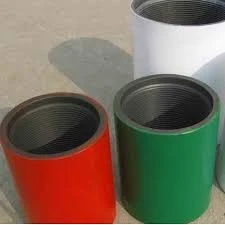- Afrikaans
- Albanian
- Amharic
- Arabic
- Armenian
- Azerbaijani
- Basque
- Belarusian
- Bengali
- Bosnian
- Bulgarian
- Catalan
- Cebuano
- Corsican
- Croatian
- Czech
- Danish
- Dutch
- English
- Esperanto
- Estonian
- Finnish
- French
- Frisian
- Galician
- Georgian
- German
- Greek
- Gujarati
- Haitian Creole
- hausa
- hawaiian
- Hebrew
- Hindi
- Miao
- Hungarian
- Icelandic
- igbo
- Indonesian
- irish
- Italian
- Japanese
- Javanese
- Kannada
- kazakh
- Khmer
- Rwandese
- Korean
- Kurdish
- Kyrgyz
- Lao
- Latin
- Latvian
- Lithuanian
- Luxembourgish
- Macedonian
- Malgashi
- Malay
- Malayalam
- Maltese
- Maori
- Marathi
- Mongolian
- Myanmar
- Nepali
- Norwegian
- Norwegian
- Occitan
- Pashto
- Persian
- Polish
- Portuguese
- Punjabi
- Romanian
- Russian
- Samoan
- Scottish Gaelic
- Serbian
- Sesotho
- Shona
- Sindhi
- Sinhala
- Slovak
- Slovenian
- Somali
- Spanish
- Sundanese
- Swahili
- Swedish
- Tagalog
- Tajik
- Tamil
- Tatar
- Telugu
- Thai
- Turkish
- Turkmen
- Ukrainian
- Urdu
- Uighur
- Uzbek
- Vietnamese
- Welsh
- Bantu
- Yiddish
- Yoruba
- Zulu
Stainless Steel Reducer Coupling | High-Quality Pipe Fittings
Understanding Stainless Steel Reducer Couplings
In the world of piping and plumbing, stainless steel reducer couplings play a crucial role in connecting pipes of different diameters. These components are essential in various industries, including construction, oil and gas, chemical processing, and water treatment. Their ability to provide a smooth transition between pipe sizes ensures consistent flow and minimizes the risk of pressure loss or turbulence.
What is a Stainless Steel Reducer Coupling?
A stainless steel reducer coupling is a fitting designed to connect two pipes of different diameters in a system. As the name suggests, it reduces the size from a larger pipe to a smaller one, enabling seamless fluid or gas flow. These couplings are made from stainless steel, which is known for its durability, corrosion resistance, and strength. This material's properties make it ideal for various applications, particularly those involving exposure to harsh environments or chemicals.
Types of Reducer Couplings
Reducer couplings come in different types, primarily focusing on the configuration of the coupling, such as concentric or eccentric reducers.
1. Concentric Reducers These types maintain the center of the larger and smaller pipe at the same vertical position. They are commonly used in HVAC systems and are ideal for maintaining proper flow patterns.
2. Eccentric Reducers These are designed such that the larger pipe and smaller pipe do not align vertically; instead, one side remains flat. Eccentric reducers are often utilized in applications where sediment can settle, as the flat side allows air to escape, preventing blockages.
stainless steel reducer coupling

Benefits of Using Stainless Steel Reducer Couplings
The use of stainless steel reducer couplings offers several advantages
- Corrosion Resistance Stainless steel is known for its resistance to rust and corrosion, making these couplings suitable for both indoor and outdoor applications, especially in environments exposed to moisture or chemicals.
- Strength and Durability Stainless steel has high tensile strength, which means it can withstand high pressure and extreme temperatures, providing a long service life.
- Hygienic Properties Stainless steel is non-porous, making it easy to clean and maintain, which is particularly important in food processing or pharmaceutical applications where hygiene is paramount.
- Versatility Reducer couplings are available in various sizes and specifications, allowing for flexibility in different piping systems and configurations.
Conclusion
In conclusion, stainless steel reducer couplings are a vital component in the piping industry, facilitating efficient connections between pipes of varying sizes. Their durability, corrosion resistance, and versatility make them a preferred choice across multiple sectors. When designing systems that require reliable and effective flow management, investing in high-quality stainless steel reducer couplings is essential for ensuring optimal performance and longevity. As industries continue to evolve, the importance of these couplings will remain significant, proving that even small components can have a substantial impact on overall system efficiency.
-
Tubing Pup Joints: Essential Components for Oil and Gas OperationsNewsJul.10,2025
-
Pup Joints: Essential Components for Reliable Drilling OperationsNewsJul.10,2025
-
Pipe Couplings: Connecting Your World EfficientlyNewsJul.10,2025
-
Mastering Oilfield Operations with Quality Tubing and CasingNewsJul.10,2025
-
High-Quality Casing Couplings for Every NeedNewsJul.10,2025
-
Boost Your Drilling Efficiency with Premium Crossover Tools & Seating NipplesNewsJul.10,2025







